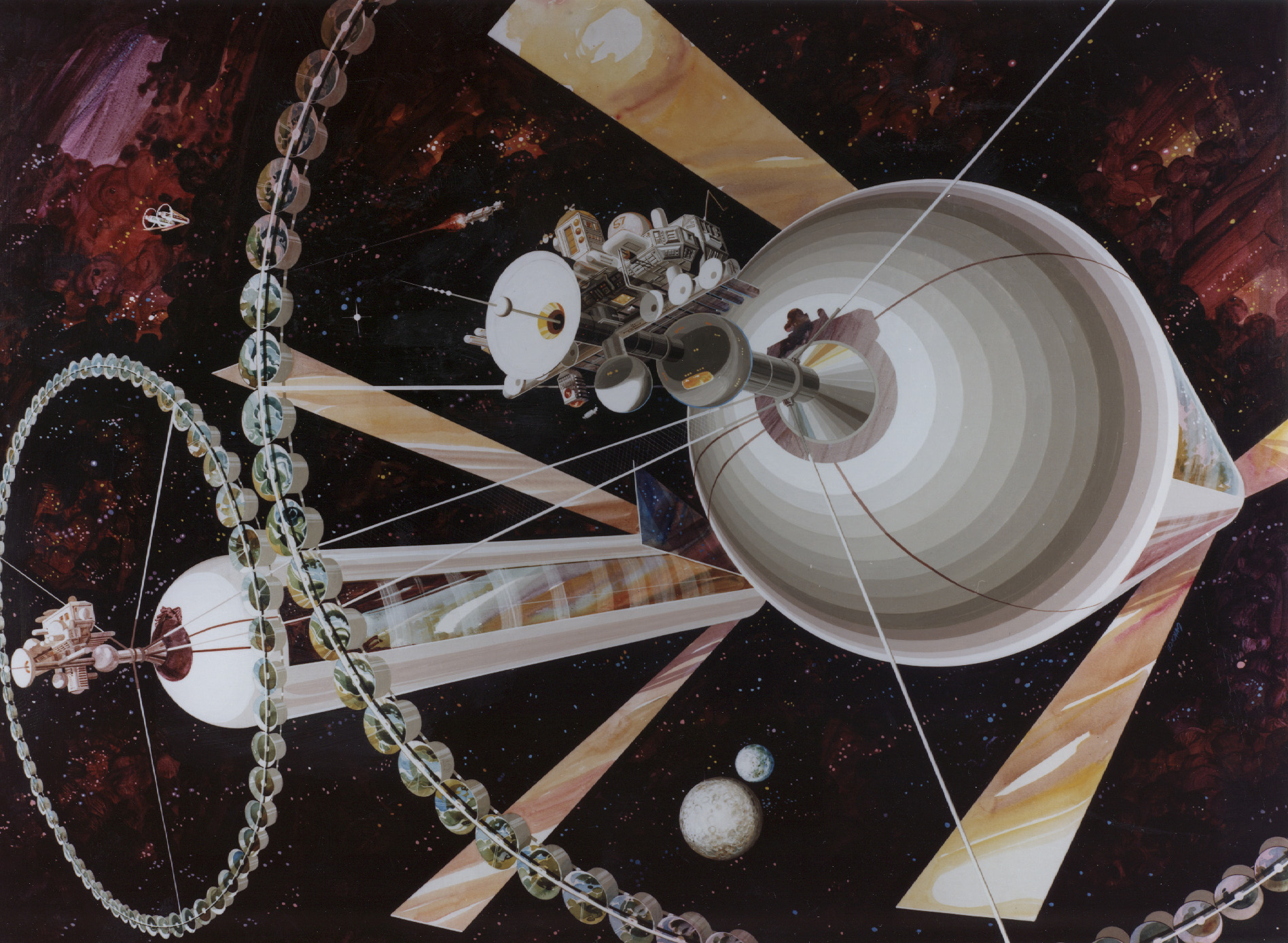
http://commons.wikimedia.org/wiki/Image:Spacecolony1.jpg
In 1969, four years after Gerard O'Neill became a full professor at Princeton University, he started to revamp the way Physics 103-104, the introductory physics courses, were taught. Students were watching the Apollo program, and he started to assign problems in his "learning guides" that dealt with objects in orbit, and space in general. These orbital problems proved to be popular with students, as it explained much of how space travel worked (at least in this author's mind). At the end of semester, he assigned a term paper where he had his students design a space habitat that was viable. Students had to calculate the mass, propulsion, and energy requirements for a working habitat.
While reading and grading these term papers, the student's enthusiasm leaked out and infected O'Neill, who wrote a paper on space colonization, which appeared in Physics Today in 1974. It was here that O'Neill started to study and design the colony that would take his name.